An Interview with John Joseph Adams
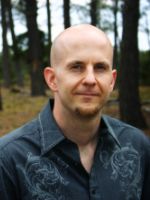 John Joseph Adams rocks. He is the bestselling editor of many anthologies, such as Wastelands
John Joseph Adams rocks. He is the bestselling editor of many anthologies, such as Wastelands, The Living Dead
(a World Fantasy Award finalist), By Blood We Live
, Federations
, and The Improbable Adventures of Sherlock Holmes
. Barnes & Noble.com named him “the reigning king of the anthology world,” and his books have been named to numerous best of the year lists. His latest books are The Living Dead 2
and The Way of the Wizard
. He is also the fiction editor of the science fiction magazine Lightspeed, and he worked for nearly nine years in the editorial department at The Magazine of Fantasy & Science Fiction.
We were lucky enough to get to ask Mr. Adams a few questions about his editing career and were rewarded with some excellent answers.
You joined Fantasy & Science Fiction not long after college. What led you to seek work there and how did working with Gordon Van Gelder influence your editing?
When I went to college, I wanted to be a writer, so I majored in creative writing (common mistake of writers everywhere), but in the course of my studies, I participated in several writing workshops, which lead me to discover my affinity for editing. After graduating, I intended to continue writing, and did for a while, but at the same time, I knew I’d have to get a day job, so I thought that what would be ideal was to get a job working in publishing. I’d lived in Florida for most of my life, and went to the University of Central Florida, but I was born and still had family in New Jersey, so I made plans to move back up north, since that’s where almost all the publishing jobs are. As it happened, my grandparents were getting to the stage where they could use some help with day-to-day things, so I moved back to Perth Amboy to live with and take care of them and to pursue a career in writing and editing.
I first discovered F&SF in the Writer’s Market directory, and noted it as one of the top markets for sf/fantasy short stories. I later discovered it in a Books-a-Million bookstore I worked at while in school, and started reading it regularly, along with Asimov’s and Analog. I had formulated a plan that these three magazines were how I would break into publishing. Looking back on it in retrospect, it seems like a ridiculous notion, but I’m glad that I didn’t think that then and went ahead with my crazy scheme. Anyway, when I moved back to New Jersey, I sent out some resumes and cover letters, and Gordon Van Gelder wrote back to me, telling me that he didn’t have any openings right then, but that I should check back with him later in the year. So, a few months later, I still hadn’t found a job I wanted–I’d given myself six months to find a job I wanted before I would allow myself to slink back to retail…and this was month five, by the way–so I wrote back to Gordon, figuring, well, it was indeed later in the year, so I’d try him again before giving up on the idea completely. And I was in luck, for his assistant at the time had just given his notice, so Gordon called me in for an interview. I got the job, and the rest is history.
As to how working with Gordon influenced my editing…well, only in the sense that he taught me everything I know. Seriously, I didn’t know anyone in the field when I got the job there, and I probably didn’t know much; I was just a reasonably smart kid who loved and had read a lot of science fiction and fantasy. Later in my career, I picked up some stuff from people like Ellen Datlow, who taught me a lot about editing anthologies (thanks again, Ellen!), but Gordon was my sole influence for about the first five years or so of my career, so he’s singularly responsible for the construction of my editorial foundation. I couldn’t have done any of this without his tutelage.
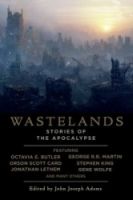 You have edited several outstanding themed anthologies in recent years, beginning with Wastelands in 2008, and they have become immensely popular. What led you to start creating these anthologies and why do you think they have been so well-received?
You have edited several outstanding themed anthologies in recent years, beginning with Wastelands in 2008, and they have become immensely popular. What led you to start creating these anthologies and why do you think they have been so well-received?
After working at F&SF for, oh, say, a week, I was sure that I had found what I wanted to do with my life. As most people who get into editorial positions are wont to do, after being an assistant for a while, I started to dream of the day when I would be sitting in the big chair, making the final editorial decisions. Since Gordon both edits and owns F&SF, it seemed extremely unlikely that I would ever get to do that at the magazine, so I set my sights on anthologies. Gordon was okay with me pursuing anthology projects while working at F&SF–he didn’t consider it a conflict of interest–so it seemed like the best avenue to pursue if I wanted to have editorial control over a project. Of course I knew–because anyone I mentioned my crazy idea of editing an anthology to would tell me–that it’s almost impossible to sell an anthology, that it’s common knowledge in publishing that anthologies don’t sell, so hardly anyone is willing to do them, and if they are, why would they want to buy an anthology from someone like me, when they could just as easily get Gardner Dozois or Ellen Datlow instead.
But I went ahead despite everyone’s advice that it would be wasted effort. My first attempt at was to edit an original anthology of post-apocalyptic fiction. So I put together a proposal, recruited a bunch of writers, and tried shopping it around on my own to publishers, as I didn’t have an agent, I didn’t think it terribly likely I’d be able to find an agent who would want to represent a first-time anthologist. It didn’t really get anywhere, but I learned a lot from the experience. Later, I worked on another anthology project with a colleague, which, while it also ended up going nowhere, I did get an agent out of it–my first agent, Jenny Rappaport (who has since retired). That project actually came close to selling at least twice, but ultimately also went nowhere.
What brought me around to Wastelands was the Bison Books reissue of Beyond Armageddon, which was basically the only “best-of” post-apocalyptic anthology in existence at the time. Being that it had been published in 1985, and there was a preponderance of new post-apocalyptic fiction written in the wake of 9/11, I thought to pitch a new “best of” volume, collecting the best post-apocalyptic work published since 1985. I specifically put the proposal together for Bison, which they passed on, not being in the position to acquire original projects, which are more costly, in general, than acquiring reissues. But Jenny thought she could sell the book elsewhere, and she did, to the next publisher she took it to: Night Shade Books.
As for why my anthologies have been so well-received, I think I hit on a couple of hot themes, and no one had really been doing these big reprint theme anthologies in recent years, so I think there was a market out there looking for them but no one was publishing them. Also, if I may say so while remaining humble, I think I put together really good books, products of exhaustive research and a comprehensive survey of the material available on each theme. It also didn’t hurt, I’m sure, that I was able to include some “big name” writers like Stephen King, Jonathan Lethem, and Orson Scott Card in my first book, plus Night Shade just did a really great job packaging and marketing the anthology (and all of the others since); Wastelands just had a fantastic cover, really spot-on visually, and I think the whole package just really spoke to the fans of that subgenre.
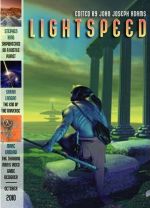 You left F&SF to establish Lightspeed, the online science fiction magazine that you now edit (Full disclosure: We love Lightspeed here at RSF). How did you make that decision? What is your goal in establishing the magazine and for the stories you publish?
You left F&SF to establish Lightspeed, the online science fiction magazine that you now edit (Full disclosure: We love Lightspeed here at RSF). How did you make that decision? What is your goal in establishing the magazine and for the stories you publish?
Well, like I said earlier, I knew very early on that I’d want to be the one making the editorial decisions some day, and it was never going to happen at F&SF, so if I wanted my career to advance it would have to happen elsewhere. So when Sean Wallace of Prime Books (the publisher of Lightspeed) approached me about the possibility of editing a new science fiction magazine, I was immediately interested.
I did take some time to think it over, of course. I had been with F&SF a long time–nearly nine years–and I loved, and still love, the magazine dearly. I knew it would be hard to have it not be a part of my life anymore. But I talked it over with Gordon, and although he didn’t want to see me go, he encouraged me to go for it, saying that he couldn’t see how I could possibly turn it down.
One of my primary goals with Lightspeed is to publish accessible science fiction. While I love sf of all types–including the type I’m about to describe–I find that a lot of the stories and novels I’ve read are so dense that anyone not intimately familiar with science fiction would likely find them impenetrable. So while I find value in that kind of super complex sf, it seemed to me like maybe there wasn’t enough sf being published that newcomers to the field, or more casual readers would be able to appreciate. The challenge, of course, is to find material that both satisfies that self-imposed mandate and satisfies the jaded reader inside of me who has seen seemingly every variation on every theme after nine years working the slush pile.
But I also love sf that pushes the boundaries and takes chances. Dangerous Visions and Again, Dangerous Visions are major influences to me; it’s really hard to come up with anything that could be considered a “dangerous vision” these days, but I’m always looking for stories that try. I’ve said before too, that one of my favorite stories is “Guts” by Chuck Palaniuk, and I always want to challenge sf writers to write stories that have that kind of emotional impact on the reader or leave such an indelible impression; even having read it already, reading “Guts” now makes me literally cringe, despite the fact that I know what’s going to happen. (And once you read it, you’ll never forget what happens.)
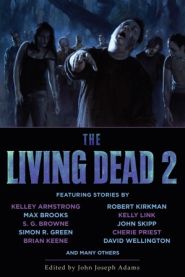 This month you have a new anthology out, The Living Dead 2. It is a follow-up to The Living Dead, which was a great success. What can you tell us about this new anthology and your decision to revisit the subject?
This month you have a new anthology out, The Living Dead 2. It is a follow-up to The Living Dead, which was a great success. What can you tell us about this new anthology and your decision to revisit the subject?
Well, when a book is as successful as The Living Dead was, the decision to revisit the subject is pretty easy. Truth be told, Night Shade was interested in the possibility of doing a follow-up volume pretty early on, given how The Living Dead kicked ass right out of the gates sales-wise, and had tons of critical acclaim to go along with it. And I had a blast editing the first volume, so it didn’t take much convincing to get me interested in doing a second volume.
At the time, I had not worked very much with original fiction in my anthologies; I had done some work with original fiction, but I still had a strong desire to include more original material in my anthologies. With The Living Dead 2, I mixed reprints and originals in one volume, but because so many other zombie anthologies had come out since Volume One was published, I decided that I didn’t want to reprint any stories that had appeared in other zombie anthologies. So, I avoided using anything that appeared in original zombie anthologies (with one exception and two possible other exceptions), so that if you’re a zombie fiction reader first and foremost, chances even the reprints will be new to you.
For the original fiction, I sought out the leading lights of zombie fiction, and was lucky enough to get almost everyone I targeted to be a part of the book. Robert Kirkman, writer of The Walking Dead comic series, was a huge coup to get–The Living Dead 2 includes his first piece of published prose fiction. That came about because we solicited a promotional blurb from him for Volume One (about which he said very nice things). After he provided that, he mentioned to me that if I did another book like that, or even a post-apocalyptic one like Wastelands, I should keep him in mind, because he was interested in trying his had at prose fiction again (which I guess he hadn’t done much of in recent years, after achieving huge success as a comic writer). So I was able to get a story from him, and from fellow zombie legend Max Brooks, plus Jonathan Maberry, David Wellington, and newcomers like Mira Grant and Carrie Ryan…and some of them even found me on their own! (And this time around we got a blurb from Shaun of the Dead himself, Simon Pegg. I guess we can extrapolate, then, if we do a Living Dead 3, he’ll write a story for that one?)
It seems funny to say something like a zombie anthology was blessed, but it really feels like both Volume One and Two were blessed, not that I believe in blessings, but everything just came together so well for both books, it was like the perfect storm. Of course, it’s too early to say if Volume Two will achieve the same success as Volume One–it almost certainly won’t, given how much more saturated the marketplace is with zombie fiction right now–but early signs point to another winner.
In any case, the book’s out now and in stores. The website for the anthology is live at johnjosephadams.com/the-living-dead-2. There, you can read eight free stories from the anthology, along with thirty-plus interviews with the various contributors to the book.
After living with zombies for so long now, it kind of feels odd to be not working on anything zombie-related. I don’t have any zombie projects lined up currently, but I’d wager I’m not done with zombies just yet.
Thank you so much for your time.
Here’s a link to “Guts” by Chuck Palaniuk. Consider yourself warned. -MR

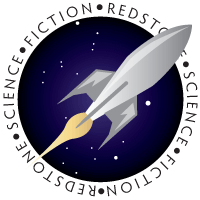
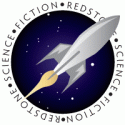



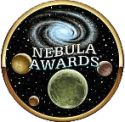
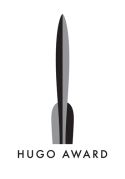
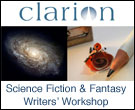


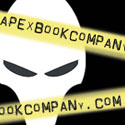
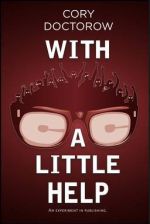
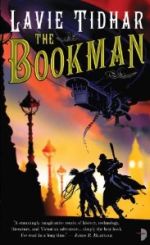
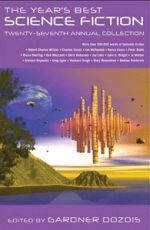
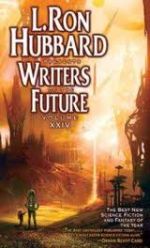
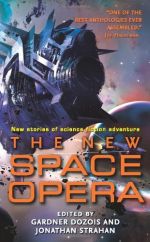
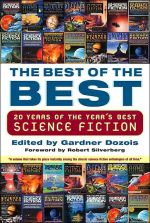
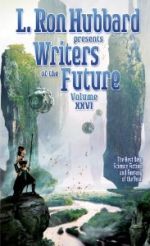
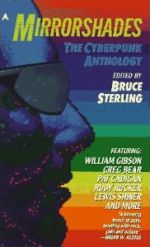
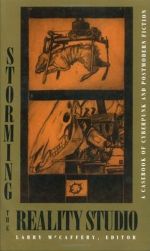
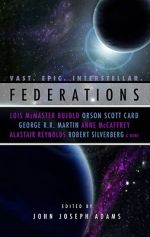
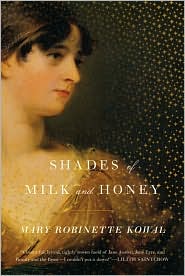

3 comments
[…] This post was mentioned on Twitter by Fabian Sax, Michael Ray – Editor. Michael Ray – Editor said: RSF's interview with editor John Joseph Adams – "The reigning king of the anthology world" is online. Great answers! http://is.gd/fLe1y […]
[…] a new interview with John Joseph Adams at Redstone Science […]
[…] Things That Go Bump in the “Might”: SciFi’s Scary Stories by Henry CribbsInterviews An Interview with editor John Joseph Adams by Michael […]